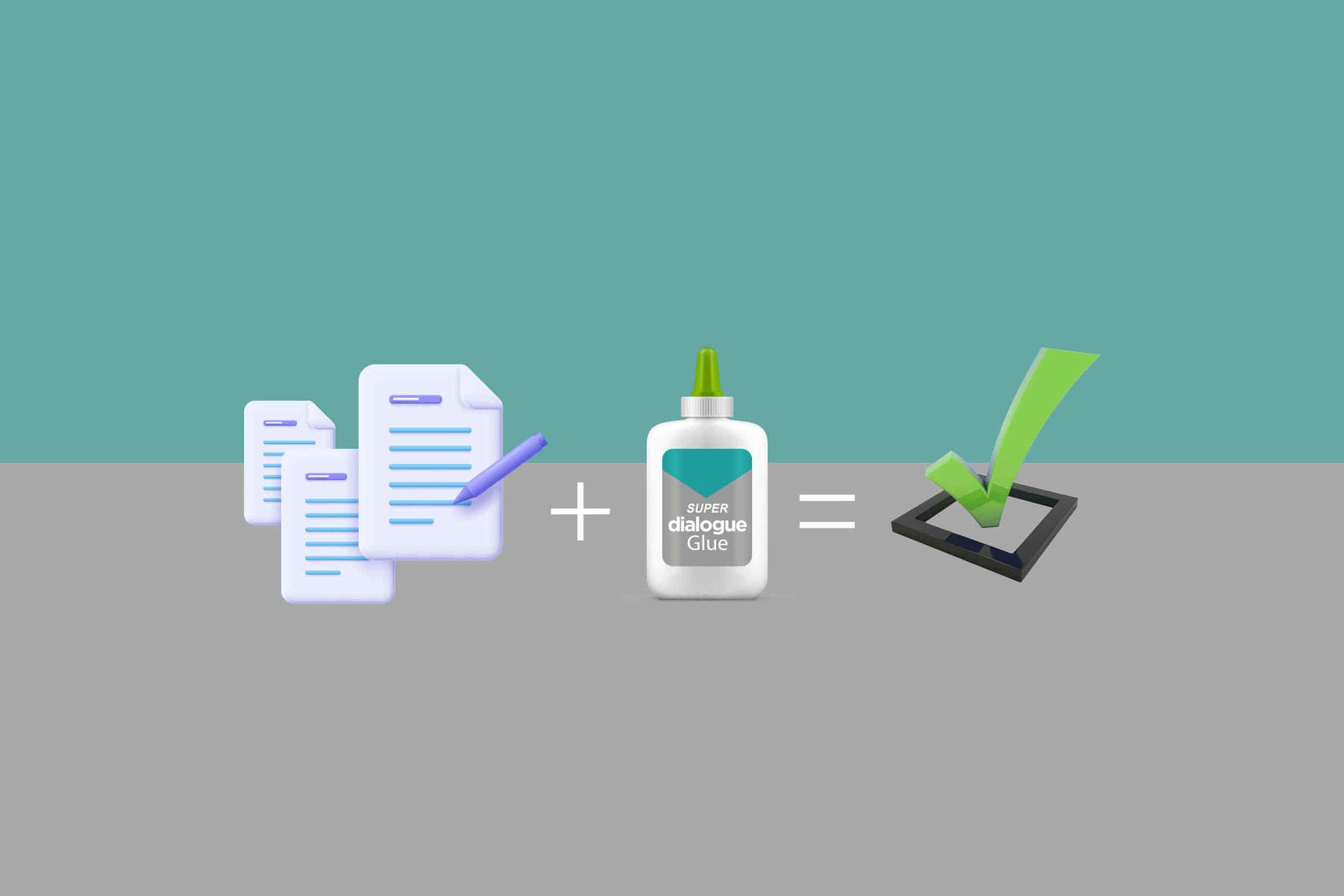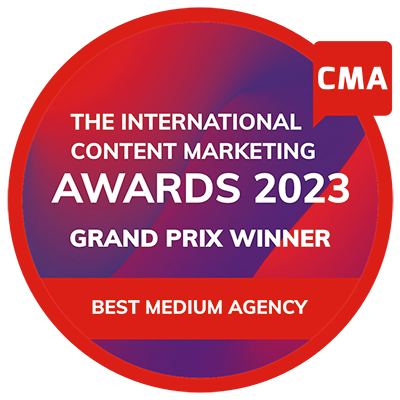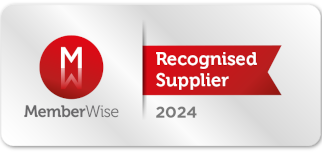
How to use branded content to create loyalty and customer retention
Howard,
-
DOWNLOAD
Your Content Marketing Checklist >

-
REQUEST TODAY
A Content Consultation >

Branded content has long been used and publicised as a marketing technique to acquire consumers, however its role in generating loyalty and customer retention is just as significant. If not more so.
Why customer retention is important
Digital marketing continues to evolve. And for businesses, the route to sales has become more complex, fragmented and technical.
What’s more, it’s become more expensive: the customer acquisition cost has risen 60% in the past six years according to eCommerce optimisation platform, Simplicity DX.
It’s also become more competitive: as consumers, we’re spoilt for choice: 36% of Americans tried a new brand in the past year, according to McKinsey's research on shopping habits.
On the other hand, loyalty programmes were cited by nearly 70% of respondents in the Yotpo’s annual State of Brand Loyalty survey as the top experience that brands could offer to generate customer retention while 83% believe belonging to a loyalty programme influences their decision to purchase from a brand again.
And as we discovered in our Brand Communities Report,
- 50% of digital natives (the 16 to 24-year-old age group) are members of at least one brand community
- This demographic value early access to price promotions, special offers or sales (31%)
- Key for them also are experiences and content that help them understand the brand; 27% want exclusive content and 22% exclusive experiences
We know loyalty is important but as with all marketing, it's becoming much more challenging .
According to Business Week, 60 – 80% of a business’s defecting customers describe themselves as ‘satisfied’ or ‘very satisfied’ just before they leave.
Meanwhile, the Forum Corporation reports 70% of the reason customers leave a company has nothing to do with the product.
McKinsey’s research on loyalty is eye-opening: it says average customer experience performance is worth less than it used to be and is actually driving away customers.
Since 2009, McKinsey found that average customer experience performance has been worth about 5 – 10 percent less in terms of key kpi’s including ‘likelihood to remain/renew’, ‘to buy another product’ and ‘to recommend’ for companies each year in the industries that were analysed. However, improving customer experience from average to ‘wow’ is worth 30-50 percent more in the same industries.
Customer satisfaction is increasingly determined by the complete set of customer experiences across all touchpoints from on-boarding to problem resolution.
The upshot? Consumers’ expectations are rising - and customer retention requires the same amount of rigour as acquisition therefore.
What content to consider in a loyalty plan
While a sales-focused loyalty plan is important to drive repeat business, it’s also the place to build brand awareness, educate consumers on values and drive deeper engagement through the power of content. This is particularly significant for shoppers who are seeking to align their values with those of the businesses they shop from.
Again, from the Yotpo’s survey, we can see: 85% of global consumers agree they are more likely to purchase from a brand whose values are aligned with their own. This rises to 90% of Gen Z shoppers.
How a business treats and communicates with its audience needs consideration therefore to ensure the consumer is primed to purchase again, not bounced back into another brand’s sales funnel.
Again, according to McKinsey's Consumer Decision Journey, more than 60% of skincare products buyers go online post-purchase to conduct further research.
The knock-on effect for brands and their content considerations is around developing messaging that’s relevant at the moments that matter; making brand communications feel personalised and translating instore or experiential activations into relevant content for the different consumer types.
Customer retention content strategies
So how to create relevant customer retention content strategies in consideration of these diverse agendas and different consumer profiles?
Of course, brand and business objectives are always going to drive what’s necessary when creating content – as will any differing mechanisms in use that allow the brand to communicate with and analyse its audience.
As discussed in our blog on customer retention programmes, there are various types in operation;
generic (10% off for all members), point-based, tiered, paid-for, value-based, enrollment, partnership, game-based and special attention.
Content provision is likely to be different too therefore as what’s needed in a partnership programme is likely very different to gamification, as outlined by the Loyalty Science Lab.
However, while the above approaches may require a more ‘technical’ approach to content creation – there are various schools of thought as to how to achieve true loyalty. What’s significant is not necessarily the specifics of the loyalty mechanism, but what’s significant in building an emotional connection with the consumer. What makes them feel valued - naturally, content is a key part of this.
The first suggests emotional loyalty is achieved through a combination of affinity, attachment and trust.
- Affinity is built from what the company has to offer, what it gives back and how it communicates this through personalised messaging;
- Attachment from the implementation of this approach in the longterm and
- Trust through brand authenticity, valuable communications as well as the robustness of product and service delivery and any digital support tools.
In addition, the Loyalty Report suggests there are other aspects that influence loyalty, suggesting any customer retention strategy should do the following:
- meet the needs of consumer
- make the experience enjoyable for the consumer
- make the brand experience better
- reflect the consumers’ expectations of the brand
- ensure the rewards and benefits are appealing
Of course, content can’t address every single aspect of the loyalty mix but it’s easy to see how important it is in developing emotional loyalty through relevant and personalised messaging, communicating the brand experience and making it all easy and enjoyable to boot.
How to create loyalty and customer retention content
Whatever loyalty programme you’re considering, we can see that content is necessary to do much of the heavy lifting in supporting the transactional nature of any programme.
Any strategy needs an initial phased approach:
1. Evaluation of audience
2. Segmentation of audience into demographic and content preferences
3. Creation of a long-term strategy (annually or to fit with the renewal/product lifecycle)
The phased approach then needs the following types of content to connect with the consumer meaningfully:
- Brand and demographic-specific content
- Quick-win value-adds for the consumer eg, How To Guides
- Live experience coverage
- User involvement (from polls to UGC)
- Bespoke ‘surprise and delight’ content for the consumer
- Brand partnership benefits
The content is delivered across various communication channels from the general to the customised depending on the consumer profile.
Types of customer retention content to develop
From the outside, content can feel like an amorphous proposition but it can be prioritised and categorised to affect key objectives.
At the outset, content is dictated by the target audience, whether it’s B2B or B2C together with demographics, interests, content and channel preferences. But it’s also important to consider what’s important at the retention stage of the customer cycle.
There may be some overlap with content used at the acquisition stage, but after the consumer has been exposed to your brand, the job of content is to reinforce the brand, drive further sales and consolidate the relationship.
Subsequently, there are some particular themes and approaches that are significant:-
We can apply the SAVE marketing model when creating a content framework that’s relevant to loyalty and customer retention.
Created by Richard Ettenson, Eduardo Conrado and Jonathan Knowles, it proposes an alternative to the traditional 4Ps looking at solutions, access, value and education as the pillars modern day marketing is built on.
Any retention content we create can support this approach therefore.
Solutions - Problem solving content
Businesses should be defining products and services by the needs they meet not by their features, functions and technology. How we’re helping our consumers is the lens through which we need to shape content.
KPMG hypothesises that consumers are looking to engage with brands that understand their motivations; ones who understand how to cut through the noise, help them save time and money and how they can offload jobs with digital technology.
Access – Community-related content
Instead of 'place', brands should be considering access - a cross-channel experience that connects with the whole purchase journey.
We may therefore be looking to work with our existing consumers to source, influence and co-create content that helps our consumer understand our brand and our products and services.
Check out our work on brand communities.
Alternatively, we may want to provide exclusive content that can make the consumer feel both valued but also get an insight into the workings of our brand.
Value – brand building content
Value replaces 'price' in the 4Ps; suggesting businesses focus on benefits rather than stressing how price relates to production costs, profit margins or competitors.
Subsequently, we may be wanting to generate brand-building content that focuses on the more emotional aspect of our business. What do we stand for? What values do we champion? What causes do we align with?
Education – ‘How to’ guides and content resources
'Promotion' is replaced by education – how are we helping our consumers understand their problems and how we’re helping to fix them.
Education is at the heart of content marketing. And as we saw with McKinsey’s research earlier, consumers are heading online post-purchase to make further sense of their products and/or problems. How often have you turned to Google or YouTube to make sense of a facet of your car, to understand how to do something with your new tech, or how to style up your new item of clothing?
It makes sense for your brand to be visible around these searches or risk your consumer being hijacked by others.
Naturally, any content being generated in these capacities needs to be personalised (wherever possible), enjoyable and of good quality.
Best content channels for customer retention
As with customer acquisition and the complex nature of digital marketing, loyalty finds its place through various and multiple communication channels;
Website
App
Email
Social
Brand community
Website / apps
Print / Digital print
Live and virtual events and experiences
Naturally, some of these platforms are more appealing to consumers than others and some like print or live and virtual events offer a very specific proposition within the loyalty mix.
In our latest automotive report, EVs: Brand, loyalty and communications where we polled 1,750 consumers to understand what car brands need to be delivering to attract buyers for EVs, we asked the question, "how do you wish to be communicated with post-purchase when you’ve bought an electric vehicle?"
The responses were as follows:
Email - 54.2%
Social media - 44.9%
Online community - 20.3%
Video - 18%
Digital magazine - 17.9%
Print magazine - 15%
Postal communications - 14.8%
Pamphlets / brochures - 12.1%
Significantly, we can see when it comes to loyalty, consumers favour communication channels they can access on their own terms and just how important digital has become in the marketing mix.
It’s also worth pointing out the rising interest in online communities as places where users can source information from their peers as to the brand itself. This, again, highlights the value of working with consumers to develop and share content – as it’s perceived to be unbiased.
Find out more about how to set up a brand community.
Branded content ideas for customer retention
While the SAVE model framework is valuable as a guide to content creation, sometimes it’s good to have a few creative content ideas to put into practice.
It’s worth putting energy into evergreen content - in other words, material that won’t date, in order to get the very most out of your budget and resources. In doing so, you should be looking for content that provides value and entertains, resonating with the consumer on an emotional level in order to generate brand awareness and recall.
Ideas can include:
Storytelling:
Stories are illustrative, easily memorable and allow any business to create stronger emotional bonds with customers.
The human brain is far more engaged by storytelling than by cold, hard facts. When reading straight data, only the language parts of our brains work to decode the meaning. However, when we read a story, the language parts of our brains light up as well as other parts of the brain we use if we were actually experiencing the story become activated too.
It's far easier for us to remember stories than hard facts therefore.
Brands are often sitting on a wealth of interesting stories: from their history to their mission; from the founders to employees; from their associations (cultural or collaborative) to their customers; from events to sustainability, there are often multiple stories to engage consumers with.
Find out more about storytelling for luxury brands.
Interactive content
The internet is an interactive medium and so consumers want to engage with the brands that they enjoy. Content marketing is becoming less about the words you put on a page, and more about the experiences you create for the consumer.
Well-crafted interactive content provides great value for consumers and brands alike: deeper engagement, shareability and the opportunity to capture more data and insight from your consumer.
Interactivity not only enhances conversions to 40-50%, but people just love to share cool, unique interactive content pieces, by as much as 28%. There’s a lot to be said for propositions like interactive quizzes, competitions, games, flipbooks and digital magazines therefore.
B2B brands aren’t necessarily discounted from the fun either: discovery quizzes and interactive calculators are just as valuable for their clients.
Find out more about interactive content.
How to guides
Throughout the blog, we’ve outlined how important it is to support your consumer’s post-purchase experience – and when it comes to content there are various types that help you do just that.
Key are explainer videos outlining your service or product offering; how to guides, demonstrations, hacks and tips as well as indepth product or service information that can help your consumers really get the most out of what you’re providing.
Thought leadership content
Valuable as part of the acquisition and customer retention marketing mix is thought leadership content. White papers, industry reports, infographics, webinars, results from surveys have become B2B marketing staples
The bottom line is that this type of content offers a unique and valuable perspective to your customers while establishing your business's credibility and boosting your industry presence.
Obviously the success of this demands perspectives, reputation and innovations to back up any claims.
Done right, it can drive valuable lead generation via SEO and social.
In conclusion
Customer retention and its relationship to content is not always easy to grasp.
However, the real question for any brand to ask itself is how is it adding value and supporting the consumer beyond the premise of just providing products and services.
Resources
McKinsey's The Great Consumer Shift
Yotpo's State of Brand Loyalty
McKinsey: For Customer Loyalty, Only the Best Will Do
McKinsey's Consumer Decision Journey
Loyalty Science Lab
Total Retail: The 3 Components to Emotional Loyalty
SAVE model
Tomorrow's Experience Today - KPMG
Take advantage of our FREE content consultation here to talk to us about any loyalty or customer retention issues you're struggling with.
Related articles
Read more insightful articles
See more from the blogThe future of luxury hospitality – Part 4: Exclusivity in an age of access
The future of luxury hospitality – Part 3: Wellness and the quest for meaning
The future of luxury hospitality – Part 2: Purpose and sustainability
The future of luxury hospitality – Part 1: Personalisation and technology
Proud to be a winner of industry awards, recognised as content marketing experts in print and digital media.












